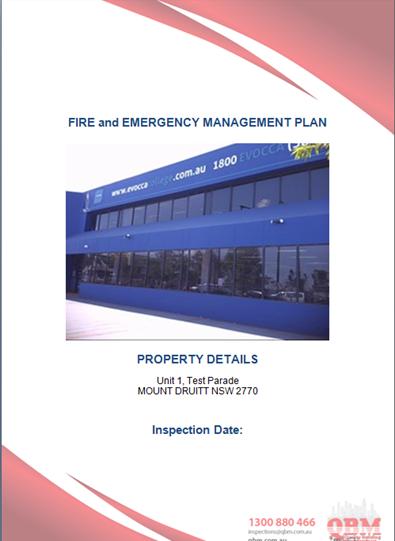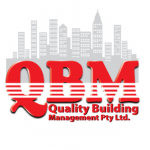
PCBUs must ensure that a Fire Plan (Emergency Management Plan) is prepared for the workplace, incurring for workers who may work at multiple workplaces.
What is an Emergency Management Plan (sometimes called a Fire Plan)?
An Emergency Management Plan (fire plan) is a written set of instructions that outlines what workers and others at the workplace should do in an emergency. An Emergency Management Plan (fire plan) must provide for the following:
- emergency procedures, including an effective response to an emergency
- evacuation procedures
- notifying emergency service organisations at the earliest opportunity
- medical treatment and assistance, and
- effective communication between the person authorised to coordinate the emergency response and all people at the workplace
- testing of the emergency procedures—including the frequency of testing, and
- information, training and instruction to relevant workers in relation to implementing the emergency procedures.
What types of emergencies should be covered?
The types of emergencies to plan for may include fire, explosion, medical emergency, rescues, incidents with hazardous chemicals, bomb threats, armed confrontations and natural disasters.
The Emergency Management Plan (fire plan) should be based on a practical assessment of hazards associated with the work activity or workplace, and the possible consequences of an emergency occurring as a result of those hazards. External hazards should also be considered in preparing an emergency plan, for example a chemical storage facility across the road.
In developing the plan, consideration should be given to the application of all relevant laws, including public health laws (for example, workplaces that are also public places) and state or territory disaster plans.
 Level of detail—relevant factors to be considered
Level of detail—relevant factors to be considered
Emergency Management Plans (fire plans) do not necessarily have to be lengthy or complex. They should be easy to understand and tailored to the specific workplace where they apply. QBM prepare our Emergency Management Plans (Fire Plan) to be very comprehensive but still being simple to read and understand.
In preparing an emergency plan, all relevant matters need to be considered including:
- the nature of the work being carried out at the workplace
- the nature of the hazards at the workplace
- the size and location of the workplace, for example, remoteness, proximity to health services, and
- the number and composition of the workers, for example, employees, contractors, and other persons at the workplace such as visitors.
- Special consideration may need to be provided for workers who travel for work, work alone or in remote locations. The checklist on page 4 of this fact sheet provides examples of relevant factors to consider.
Inclusions in the QBM Emergency Management Plan
The Emergency Management Plan (fire plan) sometimes called a Fire Plan include practical information for workers such as:
- emergency contact details for key personnel who have specific roles or responsibilities under the emergency plan, for example, fire wardens, floor wardens and first aid officers
- contact details for local emergency services, for example, police, fire brigade and poison information centre
- a description of the mechanisms for alerting people at the workplace to an emergency or possible emergency, for example, siren or bell alarm
- evacuation procedures including arrangements for assisting any hearing, vision or mobility-impaired people
- a map of the workplace illustrating the location of fire protection equipment, emergency exits, assembly points
- triggers and processes for advising neighbouring businesses about emergencies, and
- the post-incident follow-up process, for example, notifying the regulator, organising trauma counselling or medical treatment.
Procedures for testing the Emergency Management Plan (fire plan) including the frequency of testing are included.
Access to the Emergency Management Plan (fire plan)
Emergency plans, or a summary of key elements of emergency plans, should be readily accessible by workers or on display in the workplace, for example on a notice board.
Training in emergency procedures
Workers must be adequately trained in emergency procedures. Arrangements for information, training and instruction of workers must be set out in the Emergency Management Plan (fire plan) itself.
Training may include practising evacuations, identifying assembly points, location of emergency equipment, first aid arrangements and how to safely shut down machinery.
- In determining training requirements, the following should be considered:
- inclusion of emergency procedure training in induction courses for new workers
- provision of refresher training for existing workers
- provision of training for short-term contractors or visitors at the workplace (this may not need to be as extensive as may be required for workers), and
- provision of specific training for individuals who have a formal role in an emergency for example fire wardens, floor wardens, first aid officers.
Shared workplaces
In shared workplaces PCBUs must consult, cooperate and coordinate activities with all other persons who have a work health or safety duty in relation to the same matter, so far as is reasonably practicable.
In shared workplaces where there are multiple PCBUs, a master Emergency Management Plan (fire plan) could be prepared that all relevant duty holders use. Examples of shared workplaces include shopping centres, construction sites or office buildings.
Reviewing Emergency Management Plans (fire plans)
For Emergency Management Plans (fire plans) to remain current and effective they must be reviewed and revised (if necessary) on a regular basis. For example:
- when there are changes to the workplace such as re-location or refurbishments
- when there are changes in the number or composition of staff including an increase in the use of temporary contractors
- when new activities have been introduced, and
- after the plan has been tested.
QBM schedules a review each year to fully comply with legislation and to ensure the workplace is has a complete and up to date plan in place.
(Safe Work Australia, 2012)

